JOHN LENNON
John Lennon and Rickenbacker 325
John Lennon and Rickenbacker 325 Rock ‘n’ roll legend John Lennon shot to super stardom as the founder, co-songwriter, co-lead vocalist and rhythm guitarist of the Beatles. His legendary song writing partnership with Paul McCartney is still lauded as one of the most remarkable in music history. After the Beatles split, Lennon also embarked on a massively successful solo career.
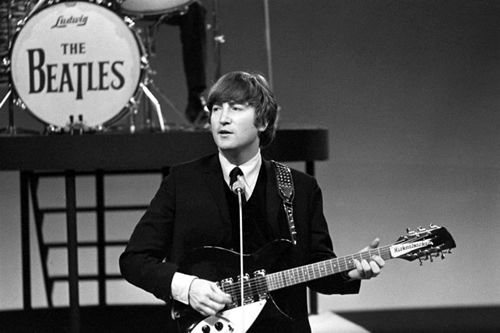
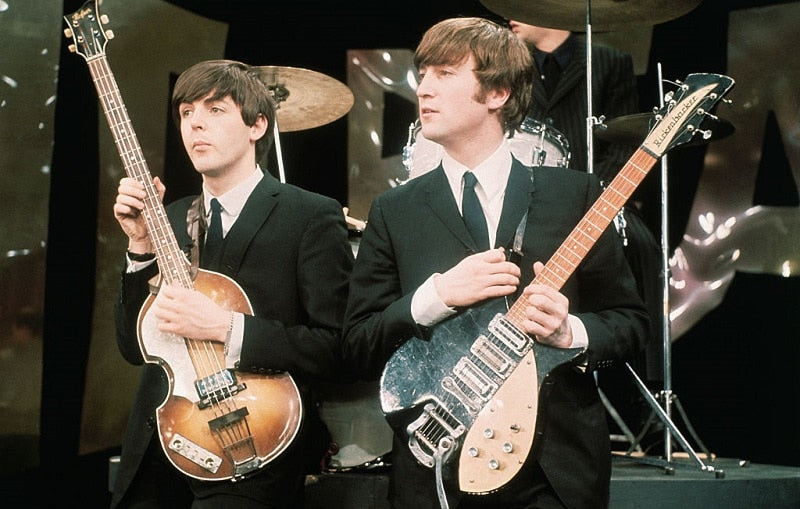
RICKENBACKER 325JL
For guitar aficionados, Lennon can also be credited with causing an explosion in popularity of the now iconic Rickenbacker. It was in the late 1950s when a fresh faced, and still unknown, John Lennon saw his dream instrument hanging in a Hamburg guitar shop. The guitar in question was a natural-finish 1958 Rickenbacker 325. It was love at first sight. Beatles lead guitarist George Harrison, who was also on the fated shopping trip, later told the BBC that John needed a decent guitar and that the Rickenbacker just happened to be in the shop and caught his eye, a classic example of musical serendipity. The iconic 325 would become the instantly recognisable sound of Beatles rhythm guitar during the years they shot into the stratosphere of fame and success, from 1960 to around ’65. You can admire its distinctive sound on Beatles classics “All My Loving,” “I Saw Her Standing There” and “I Want to Hold Your Hand”.

John Lennon Gibson J-160E Sunburst 1964
1964 Gibson J-160E. Lennon bought this to replace the above guitar, even though he often used Harrison's for recording. It was first used in concert in Montreal on 8 September 1964 and served as a backup for the '65 world tours. Except for an extra rosette around the sound hole -- and a visible orange label inside -- it was identical to his first J-160E, but it wouldn't stay that way for long. He moved the pickup from the neck to the bottom of the sound hole, then in '67 commissioned Dutch artists Simon and Marijke Posthuma, a.k.a. The Fool, to give it a psychedelic paint job, to commemorate the "All You Need Is Love" satellite broadcast. It's seen in rehearsal shots of that event, but at air time he opted to just sing. Lennon later had it professionally stripped, replaced the pickguard and put the pickup back where it was originally. This guitar was last seen in action during the Bed-Ins, where Lennon scratched two caricatures of himself and Yoko on the front. Recently on display at the Rock and Roll Hall of Fame, Cleveland, on loan from the Lennon Estate.
One of John’s most famous acoustic guitars is easy to recognize with the sunburst finish and knobs on the soundboard to control the built-in pickup. The Gibson can be heard on the song “Love Me Do” and was used extensively on the Please Please Me sessions. Lennon picked up another J-160E, which he took on tour in 1964 and 1965.
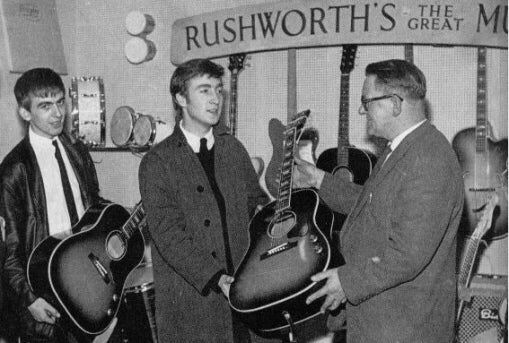
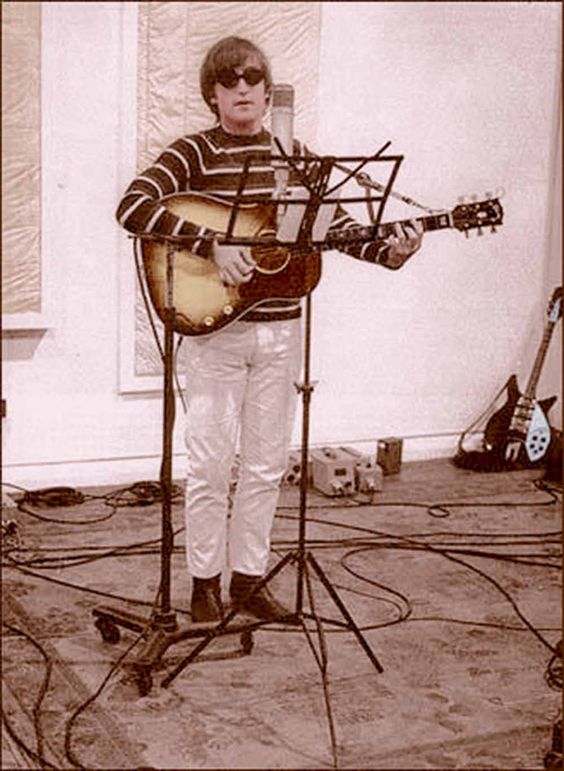
1962 Gibson J-160E acoustic/electric
1962 Gibson J-160E acoustic/electric, sunburst finish. Lennon and Harrison each bought one of these "jumbo" models (price: £161) in Rushworth's Music House in Liverpool, reportedly in September (shown at right with guitar/amp department manager Bob Hobbs). Mersey Beat, in the caption from its photo commemorating the event, noted the guitars were "the only ones of their type in the country --which were specially flown to England by jet from America." This was probably hyperbole, as they'd taken two months to arrive after being special ordered. (Additionally, these photos may have been taken a few days after the sale, for they already sport straps and smudges.) These Gibsons were used on the September EMI recording of "Love Me Do," but the June recording of the same song sounds like the jumbos were used then, also, so go figure. Lennon's J-160 E was used through the Please, Please Me sessions, then stolen during the '63 Christmas show at the Finsbury Park Astoria Theatre, London. (Pity poor Malcolm Evans, who had to break the news to Lennon.) By this time, however, Lennon and Harrison had gotten their identical guitars mixed up, so it was the one registered to Harrison that disappeared.
ELVIS PRESLEY
Elvis Presley and Gibson Dove
The undisputed original King of Rock and Roll, Elvis Presley was one of America’s greatest musical artists. Incredible magnetism, a hauntingly distinctive voice, and a colourful lifestyle combined to make Elvis one of the 20th century's most recognisable cultural icons.
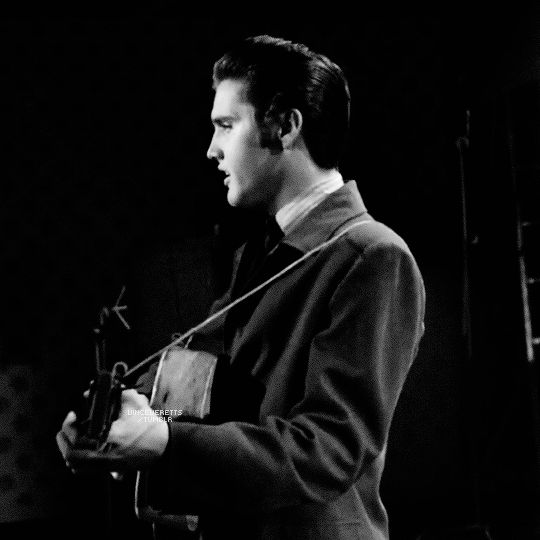
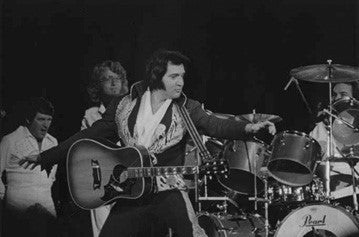
Although best known for his soulful voice, The King is a somewhat underrated as a guitarist. In fact, the Man in Black (a.k.a. Johnny Cash) cites Elvis as “a fabulous rhythm player” in his co- authored 1997 autobiography, Cash: The Autobiography. Elvis played multiple Gibson acoustic and electric guitars throughout his career, passing through a range of styles from the raw and raucous numbers at the beginning of his career to the more introspective later work. The Gibson Elvis Dove in Ebony is based on a customised 1969 Gibson Dove that was gifted to The King by his father, Vernon Presley. Elvis played it in concert regularly from 1971 through to 1975, including most memorably during the legendary satellite televised Aloha from Hawaii concert in 1973. The sound, look, and feel of Gibson instruments have since played a significant role in American musical history, a prominence that can only have been helped by their association with The King.

ERIC CLAPTON
Eric Clapton and Gibson Firebird
Legendary British rock musician and singer-songwriter Eric Clapton has become one of the most celebrated and influential guitarists of all time with a career that now spans almost half a century. Born into a musical family, Clapton asked for a guitar for his 13th birthday, marking the start of a journey that culminated in him becoming the only triple inductee into the Rock ‘n’ Roll Hall of Fame.
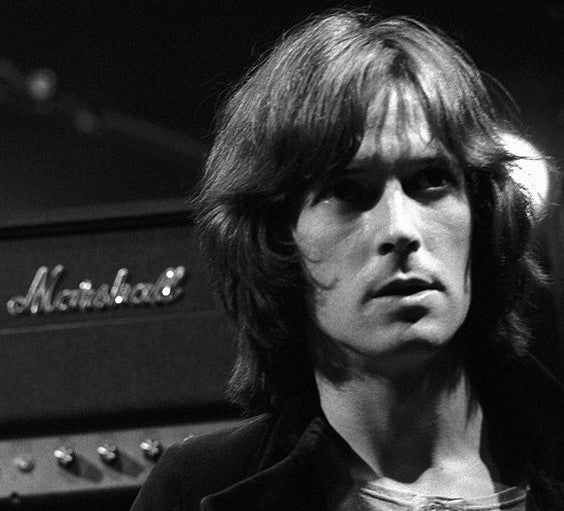
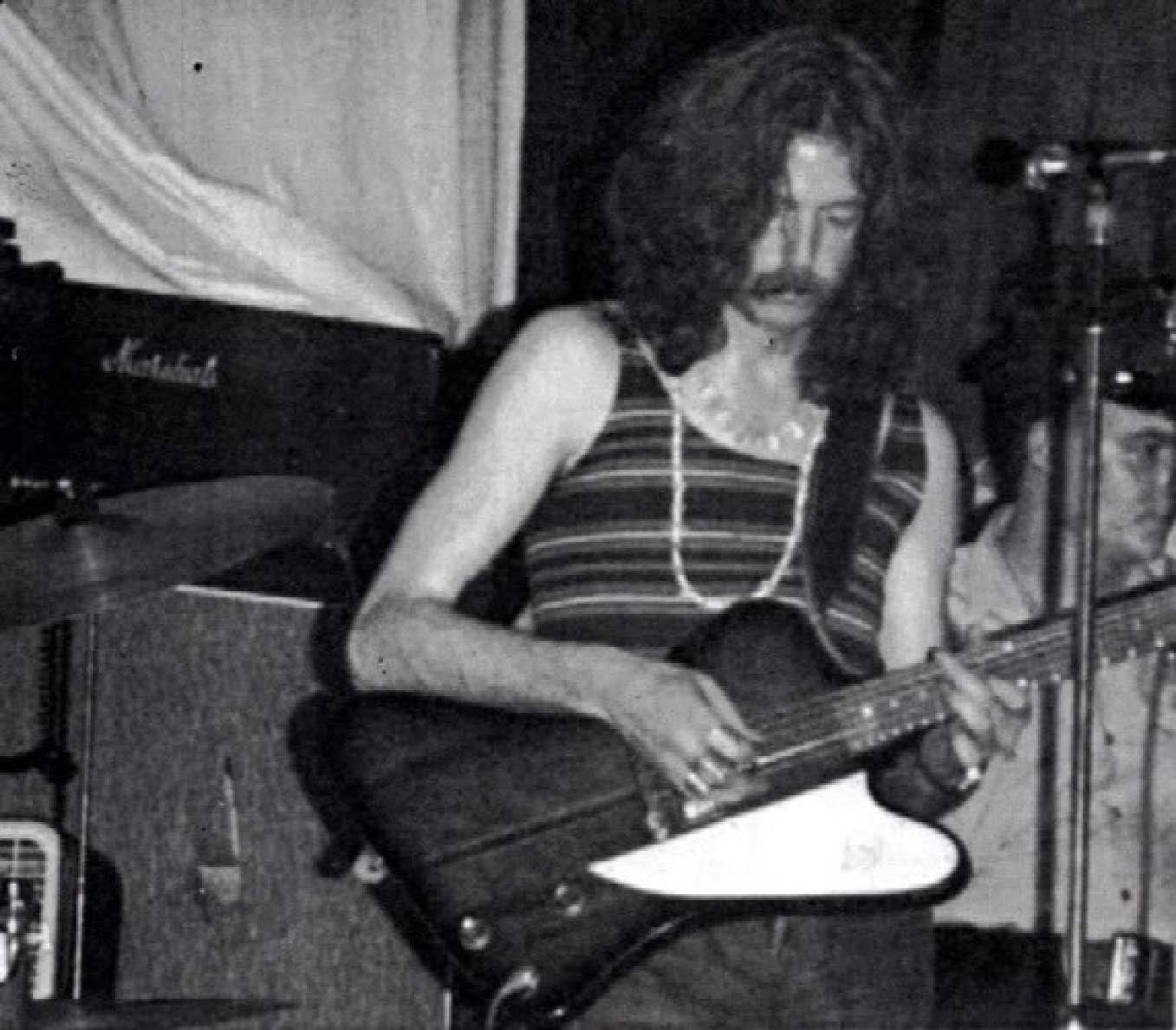
Clapton is inextricably linked to Gibson electric guitars, building his reputation for guitar virtuosity on the back of Gibson's distinctive, rich and resonant tones. His love affair with the brand began when Clapton purchased his first Gibson in 1964 – a beauty in the form of a 1964
Cherry Red Gibson ES-335. He used this guitar faithfully for 4 years before eventually selling it at auction for what can only be described as a spectacular profit. In 1965, Clapton purchased a second-hand Cherry Sunburst 1960 Gibson Les Paul. The sound that Clapton created in this early stage of his career was unlike anything that audiences had heard before, arguably decades ahead of its time, and is still widely regarded as the gold standard of electric-blues guitar music.
DAVID GILMOUR
"The Black Strat" David Gilmour’s
Of all the instruments in David Gilmour’s considerable collection, it is an off-the-shelf standard model black Stratocaster that has served him the longest as both a performance and a recording tool, appearing on every Pink Floyd albums from 1970 to 1983 and all four of his solo albums to date.
‘The Black Strat’ was integral to the recording of Pink Floyd’s seminal masterpiece The Dark Side Of The Moon (1973), as well as follow-up albums Wish You Were Here (1975), Animals (1977) and The Wall (1979), LPs which form the four cornerstones of the classic-era Pink Floyd.
David Gilmour purchased the guitar new in May 1970 from Manny’s, the iconic guitar store on West 48th Street in New York. It was bought to replace a black Stratocaster with a rosewood neck that he had purchased just six weeks earlier but which had been stolen in New Orleans, along with the rest of the band’s equipment, following the second show of Pink Floyd’s third US tour. That first black Stratocaster was never seen again.
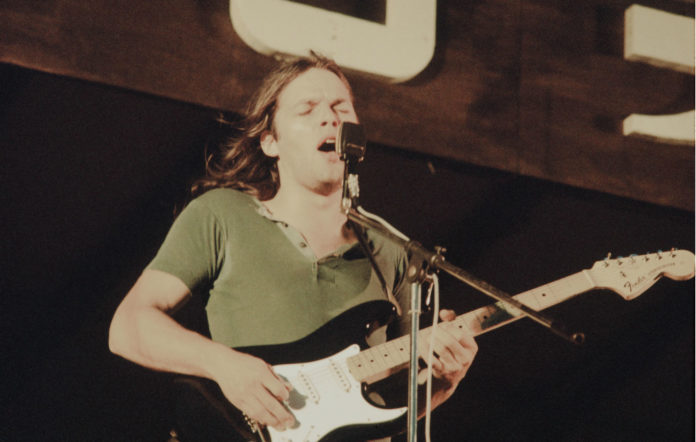
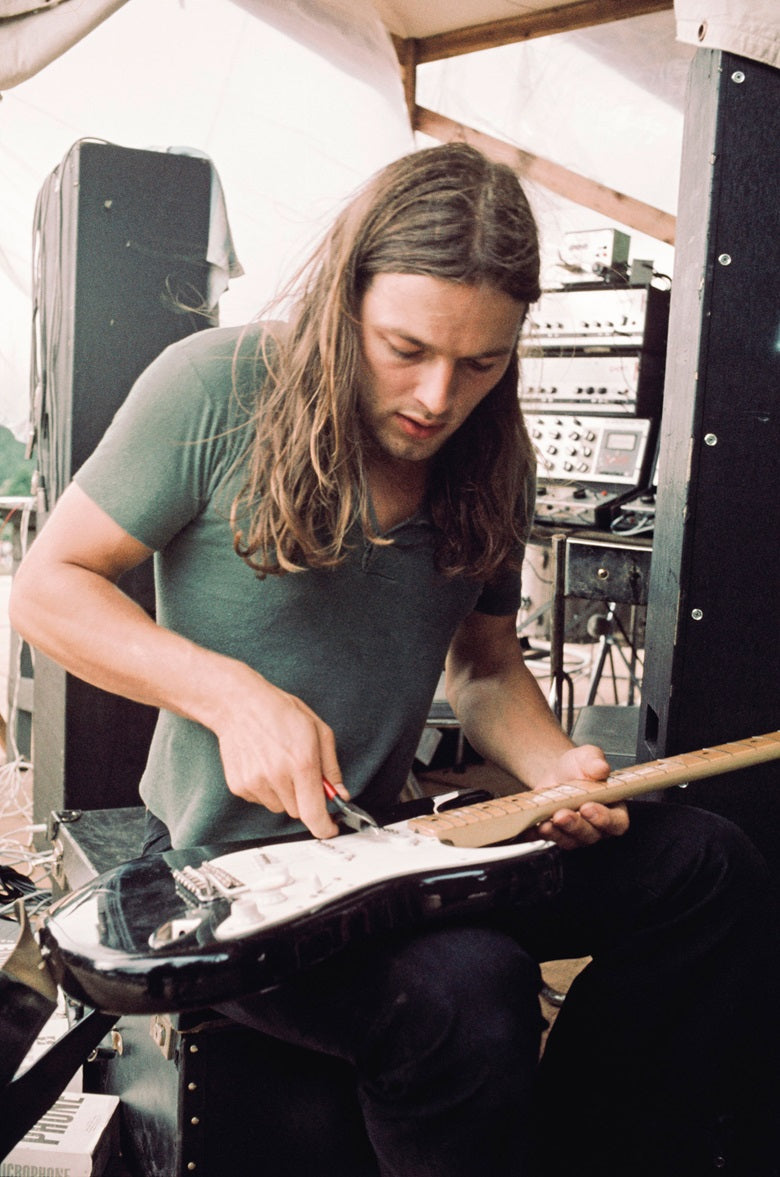
‘It became my main guitar, the one I used pretty much on everything unless there was a reason to want a different sound’ — David Gilmour on The Black Strat.
This second black Stratocaster, which would become known as ‘The Black Strat’, bore a serial number dating the guitar to 1969, and a custom black finish sprayed over sunburst. It made its first appearance on stage at the legendary Bath Festival of Blues and Progressive Music at Shepton Mallet, Somerset, during the early hours of Sunday 2 June 1970, where Pink Floyd appeared on the bill alongside Led Zeppelin and Jefferson Airplane.
Over the years, the guitar has appeared with its owner at countless one-off and benefit performances, sharing the stage with such legendary artists as Jeff Beck, David Bowie, David Crosby and Graham Nash.
In 2006, the Fender Musical Instrument Corporation asked David Gilmour’s permission to produce an accurate replica of The Black Strat. Despite his protestation that ‘it was just an ordinary Strat that I bought at Manny’s’, Gilmour finally gave the go-ahead for a series of prototypes and pickup configurations to be developed, tested and refined over the next two years. Once the fifth and final prototypes had been approved by Gilmour for sound, feel, playability and visual accuracy, the guitar went into production and was released in September 2008.
JEFF BECK
The 1954 Les Paul Oxblood Guitar signed by Jeff Beck
The 1954 Les Paul Oxblood guitar is one of the most sought-after instruments in the world of music. Originally owned by Eric Clapton, this legendary guitar eventually made its way into the hands of Jeff Beck, who used it to record some of his most iconic tracks.
The Oxblood Les Paul is known for its deep red finish, which resembles the color of dried blood. This unique finish is achieved through a special process that involves mixing red and brown pigments with a clear lacquer. The guitar features a solid mahogany body, a one-piece mahogany neck, and a rosewood fingerboard. It also has two PAF humbucker pickups, which are known for their warm, rich tone and incredible sustain.The Oxblood Les Paul is known for its deep red finish, which resembles the color of dried blood. This unique finish is achieved through a special process that involves mixing red and brown pigments with a clear lacquer. The guitar features a solid mahogany body, a one-piece mahogany neck, and a rosewood fingerboard. It also has two PAF humbucker pickups, which are known for their warm, rich tone and incredible sustain.
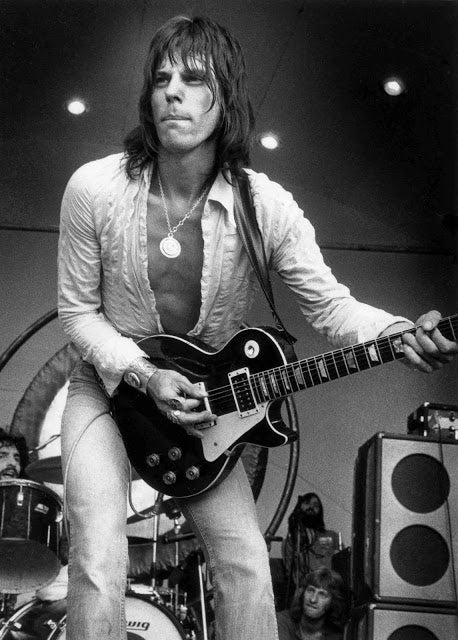
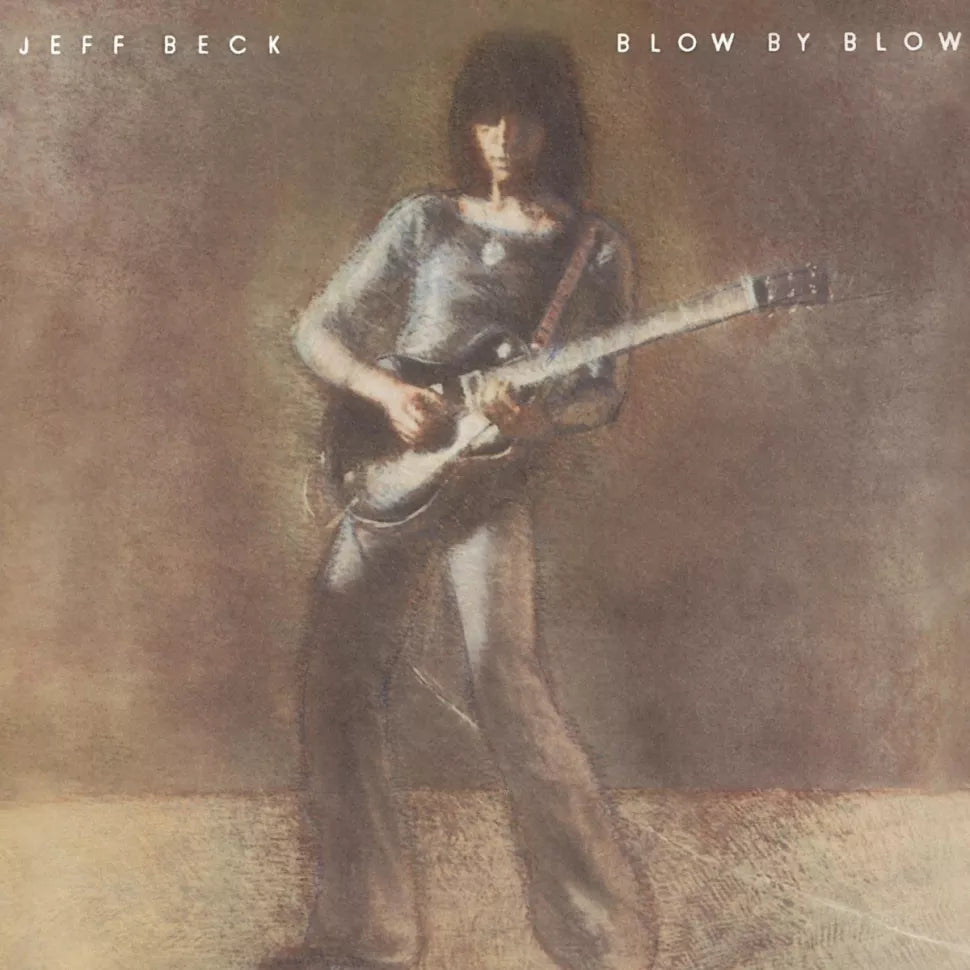
One of the most notable things about the Oxblood Les Paul is the fact that it has been owned by two of the greatest guitarists of all time. Eric Clapton used it extensively during his time with the Yardbirds and Cream before selling it to Mick Fleetwood of Fleetwood Mac. Fleetwood eventually sold it to Jeff Beck, who used it extensively during his time with the Yardbirds and his early solo career. Beck used the Oxblood Les Paul to record some of his most famous tracks, including "Cause We've Ended As Lovers" and "Freeway Jam."
Today, the Oxblood Les Paul is a highly prized guitar that is coveted by collectors and guitar enthusiasts alike. Only a handful of these instruments were ever made, and even fewer are still in existence. At auction, the guitar has been known to sell for millions of dollars.
In conclusion, the Jeff Beck 1954 Les Paul Oxblood guitar is a rare and iconic instrument with a unique history and sound. Its distinctive finish, high-quality craftsmanship, and association with two legendary guitarists make it a highly sought-after instrument that will continue to captivate musicians and collectors for years to come.

CHUCK BERRY
The Iconic Sound of the Gibson ES-330 TD
The Gibson ES-330 TD (1967) is a guitar that has been played by several notable guitarists throughout its history. The guitar is best known for its warm, mellow tone, which is due in part to its hollow body construction. This design allows the sound to resonate more freely, resulting in a rich, full bodied tone that is well-suited to a variety of musical genres.
Chuck Berry
Over the years, the ES-330 TD has been played by a number of legendary guitarists, including Keith Richards and Chuck Berry. Richards, who is best known for his work with The Rolling Stones, has used the ES-330 TD extensively throughout his career. He is particularly known for playing the guitar on the classic Stones track "Street Fighting Man." Chuck Berry, another guitar icon, was also known for his use of the ES-330 TD, which he played on numerous recordings and live performances.
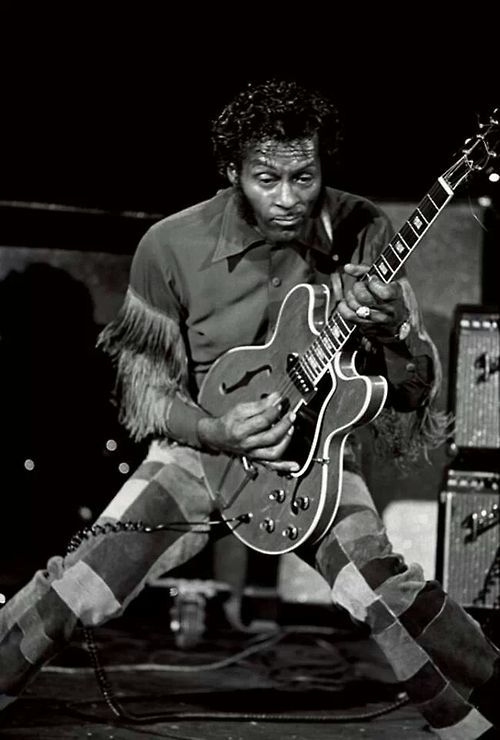
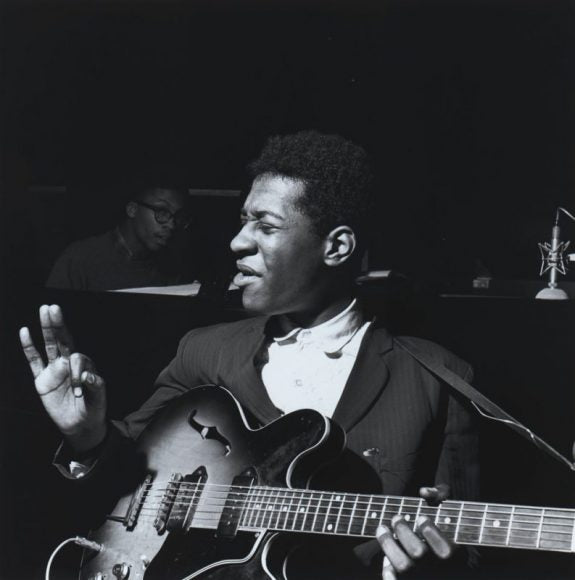
B.B. King
Other guitarists who have played the ES-330 TD include Dave Grohl, who used the guitar on the Foo Fighters' album "In Your Honor," and blues legend B.B. King, who played a modified version of the guitar known as the "Lucille." The ES-330 TD has also been used by a number of jazz guitarists, including Grant Green and Joe Pass, who appreciated the guitar's warm, mellow tone and smooth playability.
Grant Green
was a prominent jazz guitarist who used the Gibson ES-330 TD extensively throughout his career. He appreciated the guitar's warm, full-bodied tone and smooth playability, which made it well-suited to the blues and soul jazz music that he was known for. Green's use of the ES-330 TD helped to establish the guitar as a popular choice among jazz guitarists, and his innovative playing style and unique sound continue to influence jazz musicians today.
 Log in
Log in








